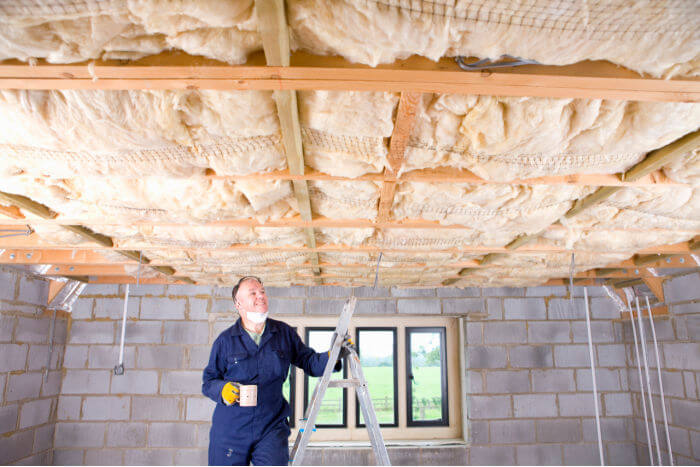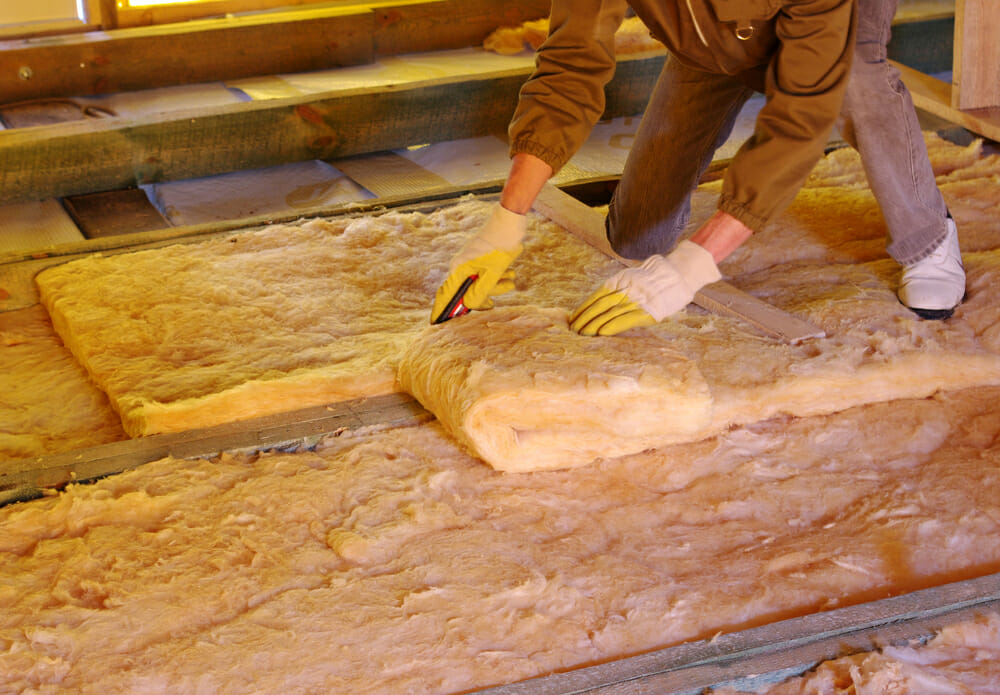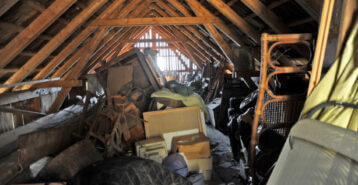Are you doing a roofing project?
Modernize can pair you with three to four pros in your area, so you can compare options and save time and money.
An attic is an often overlooked area for many first-time homeowners—a place simply used for storage. However, proper attic care is vital to keeping energy costs low and protecting the integrity of your home. In this guide to attics, we will explore some attic maintenance tips and how to keep out furry friends.
Attic Maintenance and Care Tips
When first moving in, there are some steps you should take to ensure your attic is protecting the integrity of your home. If you find any attic damage, it is important to take the necessary steps to fixing the issue before it worsens and requires repair.

#1 Look for Cracks and Moisture Damage
Every first-time homeowner should explore their attic during the daytime to properly inspect for cracks made evident by light. This damage can lead to bigger headaches in time, as moisture can develop in the space and cause mold and mildew.
Cracks and moisture can lead to structural damage of the home, and to the development and triggering of harsh allergens that can seep into your home.
It is recommended to inspect the attic monthly to identify cracks and moisture issues quickly, should they occur. Your monthly attic inspection is also an opportune time to inspect for other symptoms of damage in the home such as structural issues, stress on load-bearing walls, and building material decay.
#2 Inspect Insulation
Aside from storage boxes of forgotten holiday decorations, attics are lined with insulation that should be flush with the floorboards. This material helps reduce heat flow—keeping your home warm in the winter and cool in the summer.

In addition to boosting your energy savings, first-time homeowners should look toward proper attic insulation as one of the best ways to increase the lifespan of their roof by protecting it against moisture buildup. Insulation also serves to reduce noise pollution.
Inspect attic insulation by looking at insulation depth and ensure there are no spots missing. If your insulation is level or below your floor joints, you may need to add more insulation for energy efficiency. Always ask for help from a professional if you are not experienced in inspecting insulation on your own.
#3 Ensure Proper Attic Ventilation
Making sure your attic is properly ventilated is important to protect your roofing and avoid moisture buildup. Ventilation helps cool air enter the attic, and allows hot, damp air to exit.
Proper ventilation is especially important in the summer. Attics should be no more than 100 degrees Fahrenheit in the summer – any temperature above this is a sign you need to implement proper ventilation.
Make sure that there is one square foot of attic ventilation per every 300 square feet of attic space. If you are unsure about whether your attic is well-ventilated, be sure to have a professional come to your home and inspect.
Find the Right Contractor for Your Roofing Project
Whether you’re ready to begin your project now or need some expert advice, our network of contractors are here to help. With a few simple questions, we’ll find the best local professionals for you
#4 Inspect for Electrical Issues
Upon inspection, first-time homeowners might discover some unsafe electrical components in their attic. This can come in the form of:
- Exposed electrical connections
- Wires that are not connected to anything
- Cables that are bare, have damaged or missing insulation, or are scorched
All of these symptoms present a fire hazard and should be dealt with as an immediate step of your routine attic care.
Attic Insulation Types
If during your attic care routine, you spot that your home is in need of new or additional insulation, there are a variety of types to choose from:
- Fiberglass: The most common material. Most often used in batts, rolls, or blown loose-fill.
- Cellulose: Made from recycled paper products, this insulation typically has chemicals added to increase fire resistance.
- Foam: Can be made from polystyrene, polyisocyanurate, or polyurethane. Foam insulation can be sprayed or installed as foamboards.
Always ask a professional contractor for advice in choosing the best type of attic insulation for your home.
Improving the Energy-Efficiency of Your Attic
Repairing cracks and upgrading insulation will help boost your energy savings and reduce utility costs. There are also a few other options first-time homeowners have to make their attic even more energy-efficient.
- Energy-efficient attic fans: Attic ventilation fans push hot air outside and pull in cooler air from soffit and gable vents to reduce an attic’s temperature. They differ from whole-house fans, which cool the entire home and are installed in the attic.
- Energy-efficient ventilation: Venting the attic helps the space maintain appropriate seasonal temperatures without impacting your living area by allowing outdoor air to flow in during winter and hot air to flow out in summer. Allowing air in during winter reduces the risk of ice dams, formed when snow is melted from the roof and refreezes in gutters.
- Improving attic access point: Sealing and insulating the access to your attic can prevent excessive air leakage. This will reduce energy costs and help your home maintain a comfortable temperature.
Removing and Avoiding Furry Friends
An attic should be a warm and dry area of every home—which unfortunately is ideal for animals like mice, squirrels, and raccoons. Beyond an inconvenience, animals can cause damage to wiring, HVAC systems, pipes, and more. Not to mention they can carry fleas or diseases.
If you notice droppings, nests, signs of gnawing, squeaks and scurrying sounds, or unusual insulation damage, you might have animals in your attic.
Typically, only a professional should handle removing an animal from your attic. But there are actions you can take to prevent them from entering your home in the first place:
- During monthly attic inspections, look for any potential cracks and entry points that need to be repaired.
- Trim branches near your home that can be used by raccoons or squirrels to climb and gain home entry.
- Ensure any vents in your attic are properly covered.
- If your home has a chimney, consider installing a chimney cap.
Attic Maintenance is Home Care
An attic might not be the most frequented place in your home. But it still plays a vital in keeping your home, family, and investments protected. It is best to add attic maintenance into your regular home maintenance routine.
Should you need the help of professionals to repair damage, install insulation, or remove pests, the professionals at Modernize can connect you with a trusted contractor in your area to help you get the job done.
Find the Right Contractor for Your Roofing Project
Whether you’re ready to begin your project now or need some expert advice, our network of contractors are here to help. With a few simple questions, we’ll find the best local professionals for you
Reviews from Real Homeowners
Welcome to Homeowner Resources! We are the Modernize blog. Modernize pairs more than 3 million homeowners a year with pre-vetted contractors in their area. This blog started because we believe homeowners should know everything about their homes, from how their HVAC works to which front door colors they might love. On Homeowner Resources, you can find information on every part of your home, right down to how you can negotiate with contractors to get the best price. Here's more about the blog.
Need a contractor? Learn more about how Modernize finds the right pro for you.





